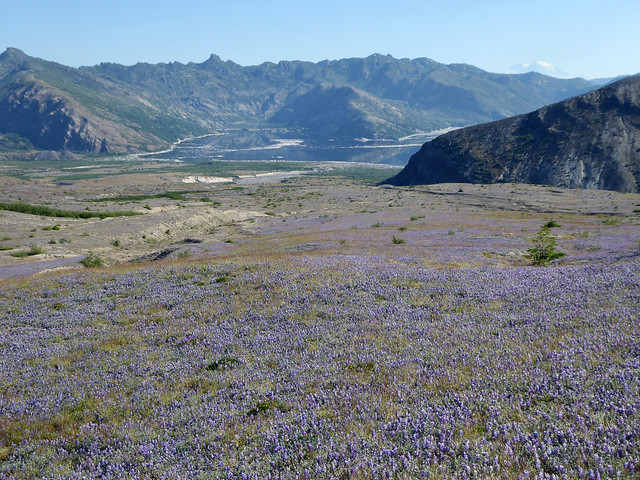
Mount St. Helens, in Washington State, erupted 40 years ago today. The largest landslide in recorded history filled valleys below with debris, and ash fell from the sky for weeks, blanketing the nearby area and affecting regions as far away as the Rocky Mountains. Within just two weeks, ash from the blast had circled the globe. 57 people lost their lives and hundreds of homes, buildings and structures were destroyed.
After the eruption, the summit of Mount St. Helens was gone, forests were obliterated and rivers followed new courses. More than 150 new lakes and ponds were formed, and existing lakes filled with sediment, flooding their banks. The eruption created a mosaic of disturbances where the landscape continues to change.
Ten days after the eruption, researchers from the USDA Forest Service’s Pacific Northwest Research Station flew over the blast area collect ecological data that would become the foundation of the one of the largest repositories of information about volcanology at any one site.
In 1982, Congress declared Mount St. Helens a national monument. This helped to make the mountain one of the foremost volcanology projects in the world, alongside Krakatoa in Indonesia and Surtsey, a volcanic island off the coast of Iceland.
The return of plants, animals and new ecosystems has been documented on the slopes of Mount St. Helens over the past 40 years. These studies have revealed extremely diverse habitats and unique biological communities.
With four decades of discovery behind them, scientists are now looking to the future and new possibilities.
Researchers at Mount St. Helens are busy cataloging and sending plant and animal samples to libraries across the nation for future scientists to study. Two hundred years from now, scientists may be able to learn from these samples using new technologies that we can’t yet imagine.
Forty years is barely a wink in geologic time. What knowledge will the next 40, or 400 years bring? Mount St. Helens continues to surprise scientists with its mysteries. As they learn, the lessons they uncover continue to help communities worldwide cope with similar disturbances, as well as those yet to come.
See the Biological Legacy of Mt. St. Helens:
(Video by Science Communications Fellow, Alexandra Freibott)
The Mount St. Helens Institute website has educational materials for all ages at www.mshinstitute.org.

